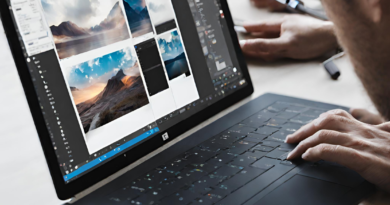The Art of Storytelling through Video Editing – Tips for Beginners
Welcome to the captivating realm where visual artistry meets storytelling – the world of video editing. Beyond the technicalities of cuts and transitions lies the profound ability to weave a narrative through your edits. In this guide, we’ll explore the art of storytelling through video editing, offering beginners tips and insights to elevate their narrative game. Video Editing Tips for Beginners
1. Start with a Clear Vision:
Before diving into the editing process, have a clear vision of the story you want to tell. Understand the purpose, message, and emotions you wish to convey. This clarity will guide your editing decisions and help create a cohesive and impactful narrative.
2. Organize Your Footage Thoughtfully:
Effective storytelling begins with organized and well-structured footage. Take the time to categorize and label your clips, making it easier to locate and use them in a way that supports the narrative flow. A well-organized project paves the way for a smoother editing process.
3. Master the Art of Pacing:
Pacing is the heartbeat of storytelling. Learn to control the rhythm of your video by adjusting the timing and length of shots. Vary between fast and slow-paced sequences to create tension, build anticipation, and evoke emotional responses from your audience.
4. Utilize the Power of Transitions:
Transitions are more than just bridges between clips; they contribute to the overall storytelling experience. Experiment with different transitions to convey changes in time, mood, or location. Seamless transitions can maintain the audience’s engagement and enhance the narrative flow.
5. Emphasize Emotions through Editing:
Emotions are the core of any compelling story. Use editing techniques to enhance emotional moments. Adjust pacing, play with color grading, and leverage close-ups to intensify the emotional impact of specific scenes. A well-edited sequence can evoke a powerful emotional response.
6. Tell a Visual Story with Continuity:
Maintain visual continuity to ensure a seamless storytelling experience. Pay attention to details like the placement of objects, characters, and lighting across different shots. Consistency in visual elements contributes to a more immersive and believable narrative.
7. Experiment with Sound Design:
Sound is a storytelling tool often underestimated by beginners. Experiment with background music, ambient sounds, and well-timed audio effects. A carefully curated soundtrack can enhance the mood, guide emotions, and strengthen the overall storytelling impact.
8. Use Editing to Highlight Key Moments:
Identify the key moments in your story and use editing techniques to highlight them. Employ techniques such as slow-motion, zooms, or unique transitions to draw attention to crucial elements. This not only adds flair to your video but also directs the viewer’s focus.
9. Master the Art of Subtle Editing:
Sometimes, less is more. Master the art of subtle editing by knowing when to let a scene breathe. Avoid unnecessary cuts or effects that may distract from the narrative. Allow the audience to absorb the story without overwhelming them with constant visual stimuli.
10. Seek Feedback and Iterate:
Lastly, storytelling through editing is an evolving skill. Share your work with others, gather feedback, and be open to iterating on your edits. Constructive criticism can provide valuable insights, helping you refine your storytelling techniques and grow as an editor. As you embark on your journey of storytelling through video editing, remember that every cut, transition, and effect contributes to the narrative tapestry. Approach editing not just as a technical process but as a means of expressing your creative vision. With practice, experimentation, and a focus on storytelling, you’ll discover the immense satisfaction of bringing stories to life through the art of video editing. Happy storytelling!



